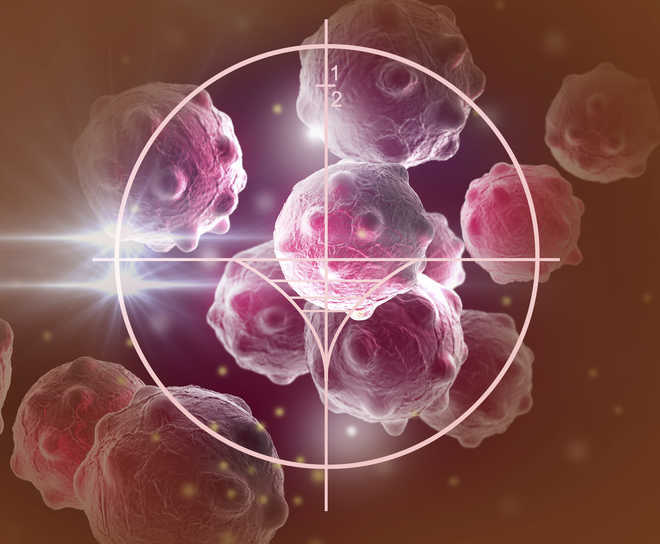Page 10597
Sep 13, 2016
Benchtop Black Holes Help Physicists Glimpse the Quantum Universe
Posted by Karen Hurst in categories: cosmology, particle physics, quantum physics
A black hole is a physicist’s playground: A place where some of the most bizarre and fundamental concepts in physics can be observed and tested. However, there is currently no way to directly observe black holes in action; these bodies of matter don’t emit the sort of radiation, like light or X-rays, that telescopes are equipped to detect. Fortunately, physicists have figured out ways to imitate the conditions of a black hole in the lab—and in creating analogues of black holes, they are beginning to unravel some the most fascinating puzzles in physics.
Jeff Steinhauer, a researcher in the Physics Department of Technion-Israel Institute of Technology, recently caught the attention of the physics community when he announced that he had used an analogue black hole to confirm Stephen Hawking’s 1974 theory that black holes emit electromagnetic radiation, known as Hawking radiation. Hawking predicted that this radiation would be caused by the spontaneous creation of a particle-antiparticle pair at the event horizon, the point at the edge of a black hole beyond which nothing—not even light—can escape. Under the terms of Hawking’s theory, as one of the particles crosses the event horizon and is captured by the black hole, the other would be ejected into space. Steinhauer’s experiment was the first to exhibit the sort of spontaneous fluctuations that support Hawking’s calculations.
Physicists have cautioned that this experiment still doesn’t confirm the existence of Hawking radiation in astronomical black holes, as Steinhauer’s black hole isn’t exactly the same as one we might observe in space. It’s not yet physically possible to create the intense gravitational fields that form black holes. Instead, the analogue imitates a black hole’s ability to absorb light waves by using sound.
Continue reading “Benchtop Black Holes Help Physicists Glimpse the Quantum Universe” »
Sep 13, 2016
Effects of Band Nonparabolicity and Band Offset on the Electron Gas Properties in InAs/AlSb Quantum Well
Posted by Karen Hurst in categories: energy, quantum physics
One-band effective mass model is used to simulation of electron gas properties in quantum well. We calculate of dispersion curves for first three subbands. Calculation results of Fermi energy, effective mass at Fermi level as function of electron concentration are presented. The obtained results are good agreement with the experimental dates.
Sep 13, 2016
Vencore Labs To Assist DARPA In Protecting The Nation’s Electrical Grid
Posted by Karen Hurst in categories: cybercrime/malcode, energy
CHANTILLY, Va., Sept. 13, 2016 /PRNewswire/ — Vencore Labs Inc., a wholly owned subsidiary of Vencore Inc., announced today that it has been awarded two prime contracts for the Rapid Attack Detection, Isolation and Characterization Systems (RADICS) program led by the U.S. Defense Advanced Research Projects Agency (DARPA). The contracts have a total value of $17M and work is slated to begin in August of this year.

The objective of the RADICS program is to develop technologies for detecting and responding to cyberattacks on critical U.S. infrastructure, with an ultimate goal of enabling cyber and power engineers to restore electrical service within seven days in the event of a major attack. Vencore Labs, a leader in smart grid security and monitoring, will conduct research and deliver technologies in three of five technical areas (TA).
Sep 13, 2016
Why DARPA Needs AI to Defeat Enemy Radar
Posted by Karen Hurst in category: robotics/AI
Can you say under statement with China’s new Radar.
The old countermeasures just aren’t cutting it anymore.
Sep 13, 2016
3D printed fish-shaped ‘nanorobots’ could be the future of medical science
Posted by Karen Hurst in categories: 3D printing, biotech/medical
Luv this.
Researchers believe they can control the microscopic ‘fish’ to deliver drugs inside humans where they’re needed.
Sep 13, 2016
Whispering gallery-mode biosensors are worth shouting about
Posted by Karen Hurst in categories: biotech/medical, particle physics
In early 2016 University Professor of Applied Physics Stephen Arnold earned a patent for his system for finding the size of one or more individual particles (such as nanoparticles) in real time using a microsphere’s whispering gallery modes.
Arnold and his team at Tandon’s MicroParticle PhotoPhysics Laboratory for BioPhotonics (MP3L) had generated excitement throughout the scientific community in 2012, when they created an ultra-sensitive biosensor capable of identifying the smallest single virus particles in solution.
Their technique was a major advance in a series of experiments to devise a diagnostic method sensitive enough to detect and a single virus particle in a doctor’s office or field clinic, without the need for special assay preparations or conditions. Normally, such assessment required the virus to be measured in the vacuum environment of an electron microscope, which added time, complexity and considerable cost.
Continue reading “Whispering gallery-mode biosensors are worth shouting about” »
Sep 13, 2016
Sky and Space purchases four Virgin Galactic missions for nano-satellite launch
Posted by Karen Hurst in category: satellites
The company will launch 200 miniature satellites through Virgin’s LauncherOne in order to provide mobile coverage to those living in remote areas worldwide.
Mechanically stacked two-dimensional Van-der-Waals heterostructures have been engineered to devise Terahertz frequency nano-detectors by using a flake of black phosphorus (BP) trapped between two layers of hexagonal boron nitride (hBN).
An international collaboration between researchers from Italy, USA, France and Poland brought together the benefits of heterostructure architecture and the potential of 2D layered nanomaterials to build THz photon sensors that operate over the 0.3−0.65 THz range, at low temperatures, with excellent signal to noise ratio values. They accomplished this by reassembling the thin isolated atomic planes of hexagonal borum nitride (hBN) with a few layer phosphorene (black phosphorus (BP)) in mechanically stacked hBN/BP/hBN heterostructures.
Artificial semiconductor heterostructures have an important role in modern electronic and photonic technologies, due to their effectiveness for manipulation and control of carriers from the visible to the THz range. Even though they are incredibly versatile, they usually require challenging production procedures due to the need of clean and abrupt interfaces. These characteristics are a major challenge for having high-efficiency devices at room temperature like source, detectors or modulators, especially in the far-infrared. With the emergence of two-dimensional (2D) layered materials, like graphene and phosphorene, as reliable, flexible and versatile alternatives for detectors operating at THz with low signal to noise ratio, this challenge was finally overcome.
Sep 13, 2016
Quantum Entanglement & Space Travel
Posted by Karen Hurst in categories: particle physics, quantum physics, space travel

Now, if we could just get the US to launch our own Quantum Satellite in space.
Recent research has taken quantum entanglement out of the theoretical realm of physics, and placed into the one of verified phenomena. An experiment devised by the Griffith University’s Centre for Quantum Dynamics, led by Professor Howard Wiseman and his team of researchers at the university of Tokyo, recently published a paper in the journal Nature Communications confirming what Einstein did not believe to be real: the non-local collapse of a particle’s wave function. (source)(source), and this is just one example of many.















